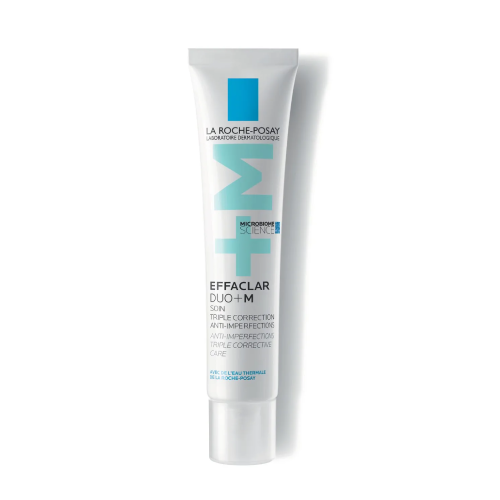Common acne myths, debunked

We ask an expert how best to deal with the skin issue of spots, pimples and acne
Spots, pimples, acne… what ever you want to call them, if you have congestion, you are not alone. In fact, acne affects up to 85% of all people sometime in their lifetime. But even though an outbreak or two (or more) is common, it can leave us feeling uncomfortable, embarrassed and desperately trying to cover them up with makeup (which can make things worse). But the world is shifting.
With influencers and A-listers posting makeup-free pictures and plenty of us getting around in public with pimple patches on, the tides are turning and pimples are becoming less taboo. The other uptick working in our favour is that skincare formulations are so good these days.
We talk to Rachel McAdam, head of medical relations for La Roche-Posay about the myths surrounding acne (here’s a hint: we no longer need to “dry out” our skin), the ingredients we need to enlist for strong healthy skin, and how keeping things in balance is key to clear, pimple-free skin.
Why Acne Happens
“Acne occurs because of multiple (and often complex) factors. During an acne breakout there are four occurrences that happen within the skin follicle: a build up of sebaceous oil and skin cells; a blockage within the follicle; bacterial growth; and a response such as redness. This chain of events can be linked to underlying factors such as genetics, hormones, an unbalanced microbiome, heavy skincare, and stress.”
Ingredients That Tackle Pimples
“Look to hydrating formulas boasting active ingredients (such as the three below) to effectively target the four key skin occurrences.
Niacinamide is a great all-rounder as it has been shown to reduce excess oil.
Beta hydroxy acids such as lipohydroxy acid and salicylic acid target blocked pores.
Prebiotics and post-biotics assist in re-balancing the skin’s microbiome.”

Get Skin In Balance
“When the bacteria that normally and naturally colonises the skin is ‘off balance’ it plays a role in worsening blemishes. Things that can throw off this balance are sometimes out of our control – like genetics. But other things – such as harsh cleansing, hot showers and poor skincare choices – we can control. Ingredients such as Phylobioma and Vitreoscilla Ferment, which are found in La Roche- Posay’s Effaclar Duo+M moisturiser, encourage the good strains of bacteria to grow and bad strains to stay low, meaning they can help to scale down the frequency and severity of breakouts.”
Look At Your Lifestyle
“When the bacteria that normally and naturally colonises the skin is ‘off balance’ it plays a role in worsening blemishes. Things that can throw off this balance are sometimes out of our control – like genetics. But other things – such as harsh cleansing, hot showers and poor skincare choices – we can control. Ingredients such as Phylobioma and Vitreoscilla Ferment, which are found in La Roche- Posay’s Effaclar Duo+M moisturiser, encourage the good strains of bacteria to grow and bad strains to stay low, meaning they can help to scale down the frequency and severity of breakouts.”
Common Mistakes Around Acne
“Common mistakes I see involve the use of harsh products with too many ingredients. The notion of ‘drying’ skin rather than keeping it well moisturised is redundant. Sun exposure also never helps skin.”
La Roche-Posay Effaclar Duo+M moisturiser, $38.95, is available here.
This article originally appeared on Marie Claire

marie claire Beauty Director, Sally Hunwick joined the marie claire team in 2017. Previously Sally has worked on Cosmopolitan as Beauty and Lifestyle Director, Women’s Health as Contributing Beauty Editor, and Harper's BAZAAR and Dolly as Beauty Writer and Beauty Editor respectively. An award-winning journalist with a long-running career both in Australia and in the UK, Sally is passionate about all things beauty and health.






